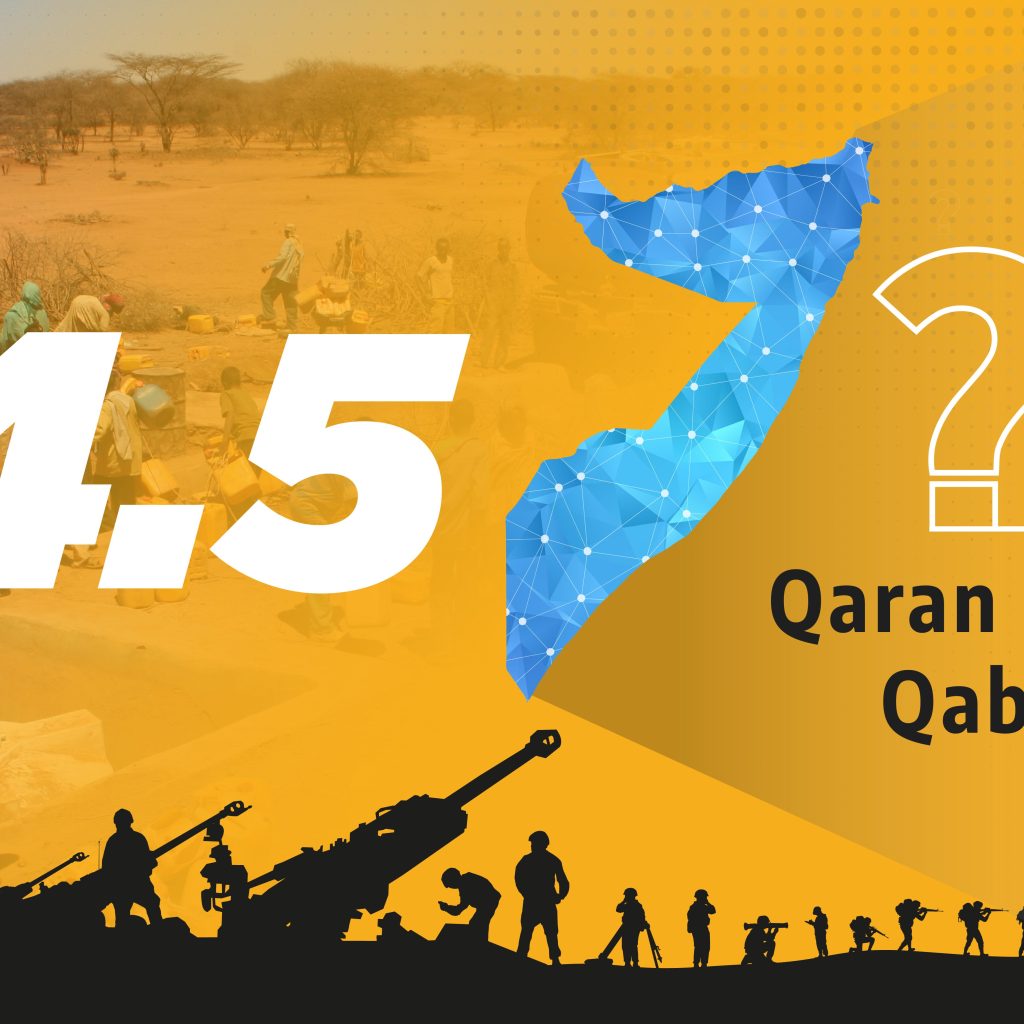Over the last three decade, the glue that has been holding Somali’s political system has been 4.5 power-sharing formula. This system was conceived by warlords in earlier days of the conflict and it has been dubbed as the most evil-genius piece of legacy by the warlords. In this short piece, I will try to shed light on the origins, its ups and downs and chart way forward. My main aim is to reflect and set debate in motion for the future of this 4.5 system.
The Republic of Somalia was established in 1960, and the Somali people democratically elected the country’s first president, Aden Adde. The new administration had open political system where Somali people were allowed to express their opinion and participate in the government system. This gave Somali citizens political power, allowing them to influence policy and other government affairs actively. The first Somali president made history when he stepped down as president after his prime minister defeated him in the election to become Somalia’s second president.
Regrettably, General Mohamed Siad Barre overthrew the elected government in 1969. Following the coup, Somalia was subjected to militarization, repression, and political upheaval. The dictatorship severely restricted freedom of expression, political involvement, and opposition parties, and the Somali people have suffered decades of fear, violence, and political instability. This led to the outbreak of civil war and the fall of the dictatorship ruler Mohamed said barre.
After the military was overthrown in 1991, the country saw social and political turmoil, resulting in the demise of the country’s strong central government and a civil war between clan militias, with starvation and widespread insecurity affecting the people.
The Provisional Constitution of Somalia is not mentioned in 4.5, nor does it rejects or criticizes it in any form; instead, It stipulates that “Somalia is a federal, sovereign, and democratic republic founded on the inclusive representation of the people and a multiparty system and social justice.”
However, Somalia’s people seem to lack a complete understanding of “4.5”. The 4.5 system is a clan-based power-sharing system amongst the dominant clans in Somalia, and creates superficial equilibrium for the warring clans. In fact, it became the standard operating norm that the four major clans grab the four branches of the government, namely president, PM, Speaker of the both Houses. This system is a vital aspect of Somalia’s federal government and comprises four of the country’s significant clans and smaller minority clans referred to as “half.” It is based on the assumption that each clan is allocated a specific.
The 4.5 governance system was established after Somalia’s civil war in 1991. It brought together several diverse political institutions under the name of a federal government to ensure power-sharing among the clans comprising the four-and-a-half system. This system was founded on four clans as significant political players in Somalia, and minority clans are referred to as half. The 4.5 system of governance was primarily successful in keeping a fragile peace between Somalia’s various clans and sub-clans. The peace deal aimed to provide a foundation for political participation and engagement among these multiple groups.
However, the 4.5 system has become the primary criterion for building a government rather than meritocracy. As a result, the federal and local governments cannot deliver the required services, namely, providing justice for all. However, many people in this generation believe it undermines the ability of Somali government institutions and promotes corruption. The 4.5 system strengthened the clan and political identity framework, in addition to Somali women. They have been left out of the political arena in Somalia. Clan leaders traditionally preferred men over women, even though women may sometimes have more excellent competency than men.
Furthermore, young people have suffered the most and continue to face nepotism based on their clan in all aspects of life, including jobs, education, businesses, and even marriage. Somali political elites use young people to solidify tribal and political identities, and most of Somalia’s institutions are built on a clan power-sharing system. The lack of equal opportunities for all Somalis may last longer unless Somalia abandons its clan-based politics.
Recommendation
The state and the clan culture in Somalia need to be kept apart. Unfortunately, it has been demonstrated that Somalis cannot wholly eradicate the clan culture; however, we can learn to differentiate between the functions of the government and statehood and the politics of the clan culture.
With the emergency of the multiparty system, it’s time for Somalia to move away from this apartheid-style of power-sharing system into more equitable, party-based politics. Although the 4.5 system has maintained some degree of political stability – at least in superficial terms – it has not eroded the trust of the political elites and sharply the divided the social fabric of the society.
It’s time for Somalia people to re-evaluate this system and ask the hard questions on the future of 4.5 formula. In doing so, we need to alter our way of approaching clan-based politics and think progressively on how to build a modern, open and participatory democracy where every Somali citizen has the right to vote and run for every office, irrespective of his/her clan.
It’s time to end this primordial, apartheid-style governance system.




